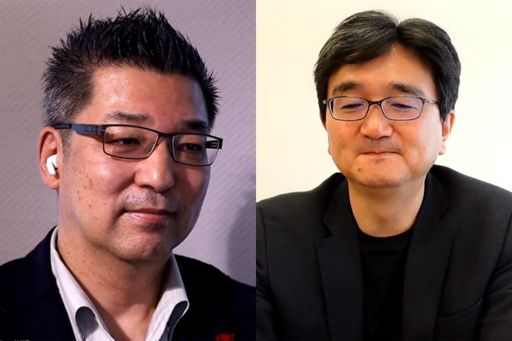Japanese society, which is now facing the risk of deindustrialization due to the shrinking working population, urgently needs to promote DX (Digital Transformation) in all aspects and resolve issues with the power of technology. In view of this situation, COVID-19 is seen by some as a strong driving force in promoting DX.
In fact, the use of technology, such as remote work and online meetings, is no longer “uncommon.” However, many people point out that such working situations “have not yet been accepted as natural enough to make people forget the old ways.”
How will digitalization and technology become “familiar” to society going forward? In this article, we will introduce the discussions conducted between Masayuki Chatani from KPMG Ignition Tokyo and Hiroyuki Morikawa, Professor at the Graduate School of Engineering, the University of Tokyo.
Contents
- Link to Vol. 1
- What the Age where “Everything Is Connected” Means
- The Strong Know What They Can Acquire from a “Pure Heart"
- Even so, Innovation Occurs from Major Companies
- Something “Interesting” Can Be Created by Respecting Each Other
- There Is a Limit to People’s Imagination
- Let’s Lower the Bar for “Digital Human Resources”
- Profile of Interviewee
What the Age where “Everything Is Connected” Means
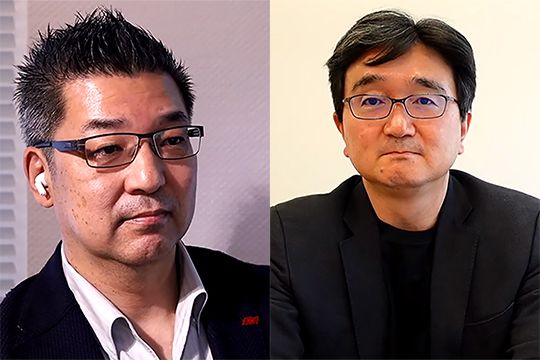
(Masayuki Chatani, Representative Director & CEO of KPMG Ignition Tokyo and CDO of KPMG Japan(left), Hiroyuki Morikawa, Professor, Graduate School of Engineering, the University of Tokyo (right)) *Professional affiliation and official position in the article are at the time of publication.
Chatani: We discussed not knowing in which direction the world will advance but what about in your field of specialty?
In your books including ”5G: Possibilities of Next Generation Mobile Communication Standard (Iwanami Shinsho),” you mention that IoT, data and AI will be connected. Plainly speaking, what do you think will change the most in such an age when various things will be connected?
Morikawa: That’s a good question. I think that people and things that are involved will increase significantly in the digital age going forward.
It can be said that things were previously simple because there were only a few people involved and we only had to look at the areas that were visible. Recently, however, if we take the example of the supply chain problem, it has become necessary to look at everything from upstream to downstream. This is because everything is digitally connected.
And this change indicates the increase in stakeholders. This also leads to the problem of having to think of how to provide value to each of these diverse stakeholders. In fact, this is what I think will be the big change.
Chatani: I see. Auditing companies like KPMG are right now facing this theme of stakeholder expansion and the need to provide value to each of them, as ESG-related matters.
In particular, it can be considered symbolic that not only conventional evaluations using financial data but also corporate “personality” are incorporated in measurement. In other words, we are in an age when things like what kind of labor system is employed by companies involved in the supply chain and whether there are any human rights risks are being questioned.
Morikawa: That’s true. I feel that, in the future, we will need to have the mindset and behavior to “increase the pie and create a market together” when we look at the entire value chain or when many stakeholders come together.
At least, it can be said that we are no longer in an age where companies compete with each other to get a larger share of the pie. It is of course essential to “get a larger share of the pie” when doing business but I think that at the same time, the “pie will increase” if various stakeholders become connected. This may sound a bit like a dream but I feel that there is some kind of opportunity in this point of “increasing the pie.”
Chatani: Is this the keyword for “digital technology will promote the redefinition of companies,” which you have mentioned?
Morikawa: Exactly! For instance, there is an argument regarding data coordination and data sharing. This argues that it will be better to share and coordinate data possessed by various companies. Its progress is especially slow in Japan and subtle even in Europe and the U.S.
Especially when it comes to companies, they will never provide their data if they only think of their own interest. However, if they think beyond this and consider things as a whole, thinking “let’s all share the profit,” they may decide to provide their data.
A case that is proceeding successfully in Japan is the “Ship Data Center (ShipDC),” in which stakeholders in the maritime industry including shipping companies and ship equipment manufacturers are joining hands beyond the framework of whether “they are competitors” and boosting the entire industry by sharing and utilizing data.
While a sense of crisis served as the driving force for establishing this organization, it can be seen that they have become aware of the need to “increase the pie.” I think that this awareness will become extremely important going forward.
Chatani: What is important in utilizing these big data? Or what do you think will be necessary for projects such as ShipDC to advance?
Morikawa: It can be said that a “pure heart” will be necessary in “increasing the pie.” That is a pure heart to wish “to become happy with everyone.” I assume that it will become a world where those who have this heart will be successful in business.
The Strong Know What They Can Acquire from a “Pure Heart”
Chatani: When you say a “pure heart” will be required to succeed in business, does this mean that there will be a transition “from a selfish way of thinking to an unselfish way of thinking?”
Morikawa: That’s exactly what I mean! This is why business leaders must develop human resources by presenting the message of “having a pure heart” to their employees as well as to themselves.
We need to think of what kind of business can be founded on a “pure heart.” This refers to the term “Go Giver” in English, which means “let’s become a giver.”
Chatani: That’s quite so. And this may be the original form of the Internet.
For instance, to set up a server to relay messages between people is indeed the idea of a giver. Also, open source is based on the idea that by opening up your knowledge and what you have created, more people can access it and refine it, and at the same time you can also have access to a lot of open source.
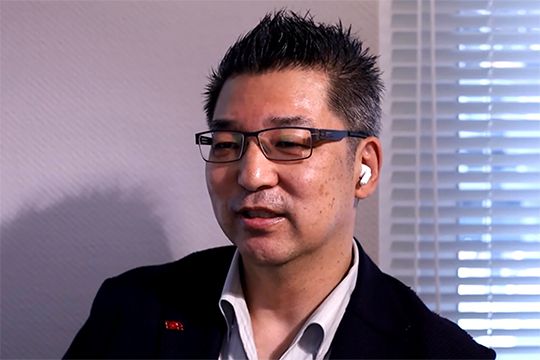
If we think in this way, perhaps we can say that the basic idea of the Internet is already an unselfish way of thinking.
Morikawa: That may be true. On the other hand, I would like to throw a curve ball about a person who is announcing an interesting interpretation regarding unselfishness.
Amy Chua, a professor at Yale Law School, is known as a person who stirs up controversy. In her book, “Day of Empire: How Hyperpowers Rise to Global Dominance - and Why They Fall (Kodansha),” in which she argues about hyperpower nations, she states that “hyperpowers are extremely unselfish” and “to give is one of the requirements of a hyperpower.”
I felt quite convinced when I read this book. It means that strong people know that by giving, they can get more positive feedback. I think that this way of thinking has something in common with business.
Even so, Innovation Occurs from Major Companies
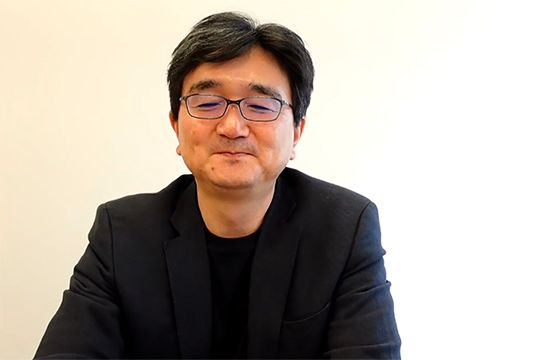
Chatani: While on the topic of business, I would like to discuss a theme which I very much wanted to ask you about. You used to say that “innovation occurs from major companies.” Has this way of thinking changed with COVID-19?
Morikawa: Well, I also have opportunities to come in contact with startups but I often feel a sense of “laboriousness” when looking at them. This laboriousness may be unique to Japan. The reason why I feel it is laborious may be that venture capital (VC) firms do not provide various resources adequately.
Startups that cannot get such support must seek out major companies for what they do not have. This will probably not change even under the COVID-19 pandemic. In the U.S., for instance, startups do not have to rely on major companies, as venture capital firms provide sufficient capital and resources. However, there are people who even believe that venture capital firms are actually supported by huge companies behind them.
In any case, I think that startups that undertake new things and major companies that boost them are both necessary. Also, what is important here is to “respect each other.” We could say that this leads to the “pure heart” which we discussed earlier.
Something “Interesting” Can Be Created by Respecting Each Other
Chatani: To respect each other is an important theme for us as well, and the viewpoint that this leads to a “pure heart” is thought-provoking.
Morikawa: Regarding this, I found a great blog article when I was studying “customer success.”
It was a blog written about 10 years ago by Maya Capur, who used to be the leader of Google’s Customer Success Team. She clearly writes that “non-technically-minded people are necessary” among human resources in charge of customer success.
At that time, Google consisted of a group of genius engineers but it would have been wonderful as an organization if they had been able to make “non-technically-minded members” a part of the team then, and if those people and the group of genius engineers had been able to have discussions with respect for each other.
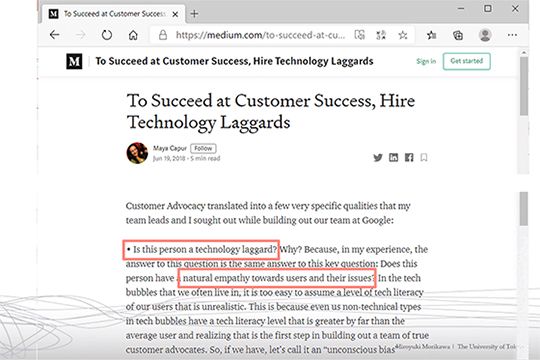
If a non-technically-minded member joined a group of engineers in an ordinary company, the engineers would reject that person, saying that he or she hadn’t even studied engineering. In the opposite case, the non-technically-minded members would refer to the engineers as “tech-nerds.” Instead, a system must be created where both sides can respect each other.
Nowadays, people are talking about the importance of diversity and respecting various kinds of diversity, and I have recently come to think that it is important to respect each other.
On the other hand, the members of my research lab are also not diverse enough. Therefore, I thought that it would be interesting to invite people with completely different backgrounds to make comments and thereby raise our awareness. I have started to work on this.
Chatani: That sounds great. This is especially true for remote meetings and seminars but there is frustration at not being able to acquire primary information when we try to work on something non-face-to-face. For instance, this tends to occur when we “answer questionnaires.” Even if the final evaluation is “good,” there are cases where a sensitive nuance is included when we actually talk face-to-face. Primary information or skin sensation, or rather some kind of non-verbal information tends to be left out in remote cases and I think this is extremely important.
There is a similar issue in our organization as well. Currently 95% of our work is carried out remotely. Meanwhile, as we are aggressively promoting employment, “personnel who joined the company after we shifted to remote work” now account for as much as about 30 percent of all our employees.
While it is natural for them to not know where the meeting room is when they come to the office for the first time, they are exchanging greetings with, “How do you do. I’m xxx.” Thinking that this is really not very good, we decided to create a space where we can have serendipitous conversations. In other words, to have an experience like real conversations where topics such as “your T-shirt is very interesting” can lead to lively conversations.
As it is difficult to have unintentional idle conversations and the atmosphere tends to become formal at online meetings where we talk according to the agenda, we are trying to create opportunities where we can talk freely at ease. Nevertheless, as the atmosphere tends to become semi-formal online after all and it is difficult to create a casual atmosphere that can be created in real space, we hope to skillfully offset this going forward.
Morikawa: I imagine so. I think this is indeed very important. This can be connected to DX, which has been the priority issue at many companies recently.
I am also focusing on the term CX (Corporate Transformation) along with DX. I think that it is necessary to realize CX, which reviews and changes working styles, the organization itself and all kinds of systems in the company, and DX at the same time.
With the realization of telework, discussions on working styles are diversifying, for instance, with the introduction of “job-type employment.” It is essential that we think about this going forward and I think that digital technology will become a real thing only when both CX and DX interlock with each other.
Though this is still difficult to explain in words, don’t you feel that there are some kinds of frictions? I feel that technology is not real yet and that even though there is technology, we are not able to master it properly. I think that we just have to work on it through trial and error.
Chatani: Is this in the domain of your research theme?
Morikawa: I am hoping to make it my research theme but I am still thinking about what specifically should be researched (laughs).
There Is a Limit to People’s Imagination

Chatani: You talked about not being able to make use of and integrate technology. Human beings have been creating technology and making it part of our lives until now but what kind of force do you think has been exerted in the process?
Morikawa: When talking about this kind of topic, “electricity” is often taken up as an example. It was in 1882 that a technology called electricity was introduced in Japan. Electric lamps quickly spread in Japan after the first lamp appeared in Ginza, Tokyo.
On the other hand, it is said to have taken 30 to 40 years until electricity became the mainstream power source at factories. Looking back now, we may think that “it would have been better to immediately switch to electricity because smoke from steam was filling up inside the factory.” However, it seems to have been very difficult to actually do that.
The reason for this was indeed the “working style.” If the working styles of craftworkers and factory workers change completely, they will face the problem of eventually changing the system and wage structure. I feel that we must also consider this history when we introduce technology going forward.
Chatani: A movie called ”Tesla (directed, written and produced by Michael Almereyda)” was released recently. It is about the battle of whether direct current or alternating current will become the major current. While electric lamps can light up with direct current, motors that are used in factories need to use alternating current as it is difficult to turn the motors with direct current. However, as direct current promoted by Edison had spread widely, it seems to have taken a little more time for alternating current to be introduced.
However, as you just said, it is more difficult to change lifestyles and working styles.
Morikawa: That’s right. Although we are now undertaking various challenges driven by COVID-19, I feel that these changes have not settled in quite yet.
Maybe an online drinking session is one of them. This style will probably become prevalent in 10 to 20 years from now. So, I feel that we are now at a searching stage.
I may be sidetracking a bit but I think that the ”Locomotive Act” is a good example of what is the “limit of human imagination.”
This is a law regarding cars that was established in the U.K. in 1865, when cars had just started to emerge. The law specified that “because cars are dangerous, they have to run at a low speed and a person holding a red flag must run in front of them to warn the surrounding people of the danger.”
We could say now that this is absurd but people of that time must have seriously thought that this act was necessary “because cars are dangerous.” New technologies and human beings have to get along with each other and I feel that imagination is indispensable in realizing this.
Let’s Lower the Bar for “Digital Human Resources”
Morikawa: I just talked about the importance of exercising imagination but I also have some thoughts about “digital human resources.”
When we say digital human resource, we get the image of “someone who is outstanding in digital technology.” For instance, someone who knows about deep learning, who can program or an outstanding data scientist... If we call these limited people digital human resources, I’m afraid that most people will feel “they’re irrelevant to me because I can’t keep up with digital technology.”
I think that this course of progress is actually a bad thing. Therefore, I hope that companies will encourage everyone to be aware that “everyone is a digital human resource and each of us is a digital person."
You may say, “what do you mean?” On such an occasion, I always cite “Workman” as an example.

Workman, which handles work clothes and related products targeting people who work at work sites and factories, is also attracting attention for its apparel such as work clothes that look like business suits. I heard that the company tells all its staff that “Excel is an essential skill” and is carrying out training accordingly.
What has happened by making Excel an essential skill is that cashiers have noticed that “sales of this product have increased after changing the way it is displayed.” If these kinds of things are occurring, I think that they are already “digital human resources.”
Naturally, in-depth analysis should be carried out by professional teams, but when an awareness is created at the work site, it can be considered that digital technology is being utilized. In order for this to happen, everyone should change their mindset to “they are all digital human resources,” and I believe that by doing so, digital technology will advance even further.
In reality, there are not many outstanding people who have studied statistics and understand deep learning as well as business. If that’s the case, I think we need to lower the bar for digital human resources.
Chatani: Without doubt, digital is initially just numbers and if one can handle numbers, I think that one can be called a digital human resource.
Morikawa: That’s right. I think that as long as they can understand the feel of it, it’s ok.
Chatani: The core of KPMG Ignition Tokyo is comprised of a group of people who are called digital natives among digital human resources.
The definition of a digital native is “a person who can create various solutions and algorithms using digital technologies and the digital world” and is distinguished from “digital capable,” who are people that can successfully master digital tools and solutions and utilize or devise them in interesting ways.
As for KPMG, I hope that digital capable people will increase among auditing and taxation entities. I would also like to create a structure where they can make much more use of what we, the digital natives, have created and provide us with feedback so that the digital natives can further evolve it.
Morikawa: In this context, I guess everyone is digital capable.
Chatani: That’s right. Today’s university students are basically digital capable from the beginning. My children were making graduation videos when they graduated but what they were making were incomparable with what we used to make. I think that their editing skills and compositional abilities are completely different.
Morikawa: That’s quite true. In 1988, when I was a graduate student, a huge amount of memory for playing just a five-minute video cost close to 20 million yen. The fact that anyone can now edit videos itself is quite shocking.
Profile of Interviewee
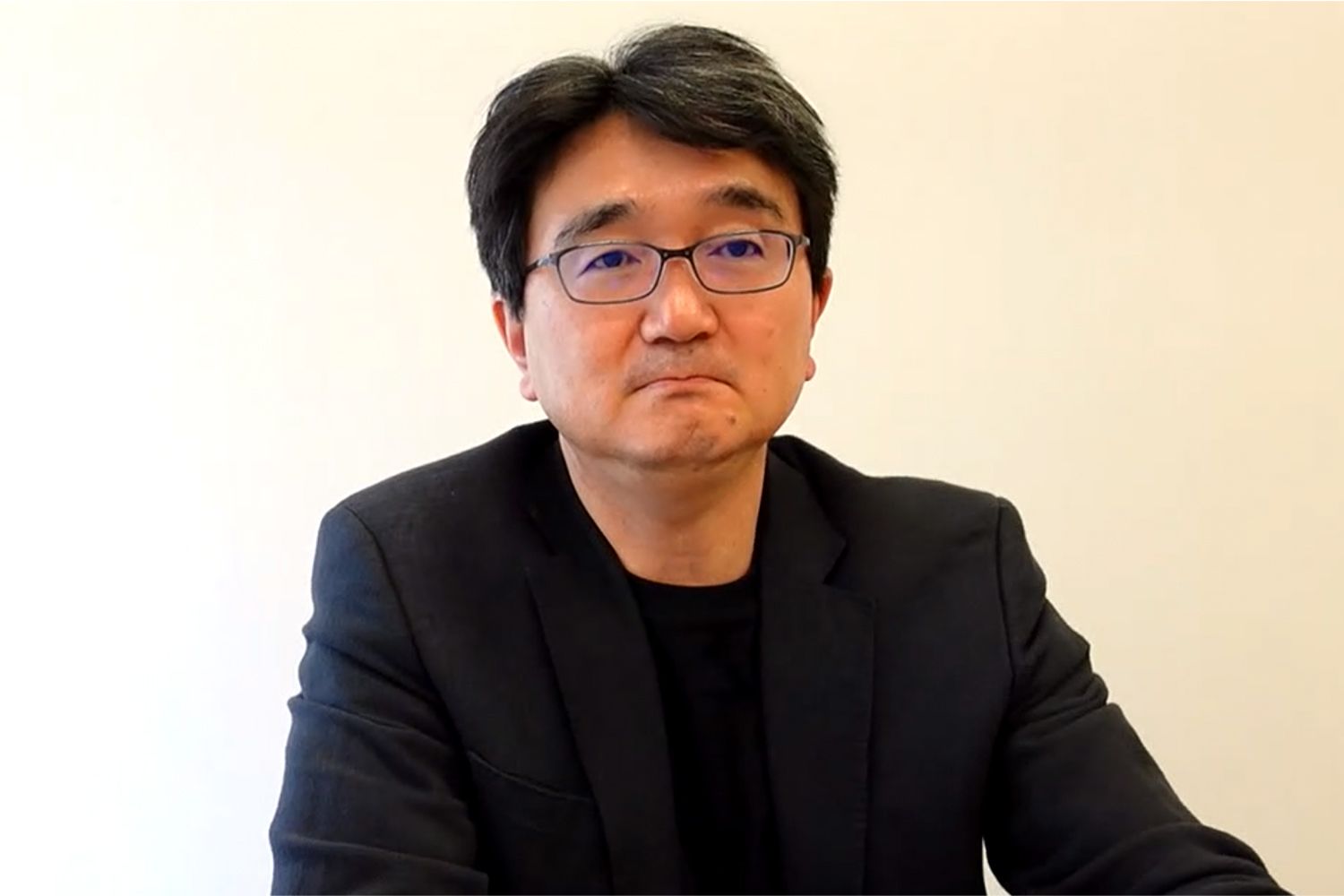
Hiroyuki Morikawa
Professor, Graduate School of Engineering, the University of Tokyo
Hiroyuki Morikawa received the B.E., M.E, and Dr. Eng. degrees in electrical engineering from the University of Tokyo, Japan, in 1987, 1989, and 1992, respectively. Since 1992, he has been in the University of Tokyo, where he iscurrently a professor. From 2002 to 2006, he was a group leader of the NICT Mobile Networking Group. His research interests are in the areas of Internet of Things / M2M / big data, wireless communications, sensor networks, digital transformation, and digital society design. He served as an OECD Committee on Digital Economy Policy (CDEP) vice chair, chairman of Beyond 5G New Business. Strategy Center, chairman of 5G-driven Social Design Consortium, chairman of Smart Resilience Network, chairman of Information and Communications Council, Ministry of Internal Affairs and
Communications. He also sits on numerous telecommunications advisory committees and frequently serves as a consultant to government and companies. He is the recipient of more than 100 honors and awards including the IEICE best paper award (thrice), the IPSJ best paper award, JSCICR best paper award, the Info-Communications Promotion Month
Council President Prize, the NTT DoCoMo Mobile Science Award, the Rinzaburo Shida Award, and the Radio Day Ministerial Commendation. His recent books are Data-driven Economy (2019) and 5G (2020).
Follow us on KPMG Ignition Tokyo LinkedIn for the latest news.
Connect with us
- Find office locations kpmg.findOfficeLocations
- kpmg.emailUs
- Social media @ KPMG kpmg.socialMedia




